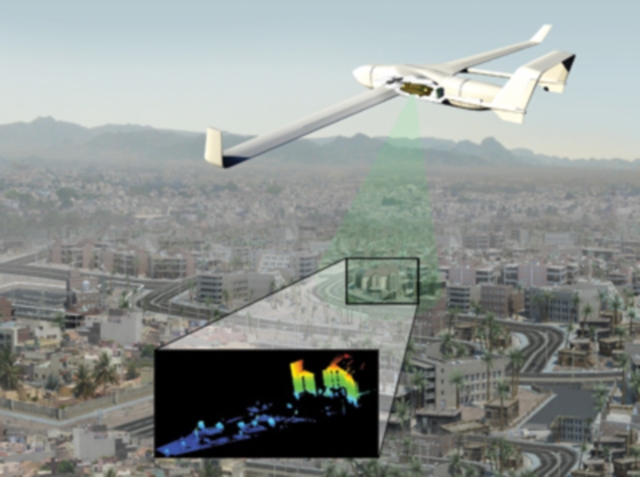 Laser technology has yet to mature, and many enhancements are left to be made. Everything lasers can do currently is still improving at a rapid rate and new techniques to improve lasers are still in the works. One such new technique is beam combining, which blends several laser streams into one high-power beam.
Laser technology has yet to mature, and many enhancements are left to be made. Everything lasers can do currently is still improving at a rapid rate and new techniques to improve lasers are still in the works. One such new technique is beam combining, which blends several laser streams into one high-power beam.
“There are a lot of people chasing combining laser beams,” says Boeing’s Rinn. “There’s a lot of research and technology growth going on there.” Researchers are taking three approaches to combine laser beams: spectral beam combining, coherent beam combining, and polarization beam combining. Each approach has its own uses, benefits, and downsides. The goal of beam combining is to increase laser power and brightness to enable long-distance communications and laser weapons.
Beam combining seeks to scale-up laser power by combining the beams of several lasers while preserving beam quality and increasing brightness.
Coherent beam combining relies on mutual coherence of beams with very low relative phase deviations to create one powerful beam. The two methods of combining using this technique are side-by-side combining and filled-aperture combining. Side-by-side combining is a process in which four fiber amplifiers produce lasers that are combined into one beam with a larger area.
Filled-aperture combining, meanwhile, combines several beams into one laser with the same beam size and divergence using a grating splitter. Both of these methods produce more power and brighter beams, but side-by-side combining also increases the size of the output beam.
Spectral beam combining uses multiple beams with non-overlapping optical spectra and combines them in a wavelength-sensitive beam combiner such as diffraction gratings or a prism. Still, spectral beam combining can have lower power scalability due to the amount of heat the beam combiner may absorb during the process. Spectral beam combining is suitable for fiber lasers, since fiber-based systems have higher-power emitters with larger-gain bandwidth, allowing for higher power lasers.
Spectral beam combining may be one of the most stable forms of power scaling for lasers, says Dr. Rüdiger Paschotta, founder of RP Photonics Consulting GmbH in Zurich, Switzerland. “Spectral beam combining has the great advantage of not requiring mutual temporal coherence of the combined beams,” Paschotta wrote in the Encyclopedia of Laser Physics and Technology . This eliminates some important technical challenges and makes it much easier to obtain stable operation at high power levels.” Temporal coherence is how predictable is the relationship between signals observed at different times.
Polarization beam combining blends two linearly polarized laser beams-one vertically polarized and the other horizontally polarized. These beams move to a thin-film polarizer so that one is reflected and the other transmitted, forcing both beams to propagate in the same direction. This creates an unpolarized beam with almost the same optical power as the two input beams combined, and with the same beam quality. Brightness similarly increases. Polarized beam combining does not scale power, however, because the unpolarized output cannot go through the same process.
“It is expected that beam-combined laser systems will in the near future reach output power levels of tens to hundreds of kilowatts,” Paschotta says. “Possible applications of such systems are in the military sector in the context of anti-missile and other directed energy laser weapons. There are also possibilities for long-distance, free-space optical communication and laser-based manufacturing.”
Boeing’s Rinn explains why laser technology has been increasing at the pace it has. “We poured hundreds of millions of dollars into the telecomm industry in the mid ’90s, and there was a huge advancement. Sensors are not only appearing in military systems, but they’re starting to appear in everyday life.”
Factories use sensors to guarantee product quality. The advent of cell phones and constant communications with satellites has raised demands for better communications. The transoceanic fiber cables that sit at the bottom of the ocean, coupled with data demands that almost double yearly thanks to the explosion of streaming video has also led to more and more research being performed on optimizing optical communications and optics in general.
“There’s a photonics revolution that’s been going on for over a decade now,” Boeing’s Rinn says, “you’re starting to see photonics in computing and telecommunications. As we get more efficient, faster processing, you’re going to see even higher bandwidths. We’re using fiber now and there are plenty of examples of how bandwidth is increasing.”
To read the full article in Military & Aerospace Electronics, click here.
Image: Boeing’s 3D LIDAR uses lasers to capture landscape depth and detail in a package that weighs less than 20 lbs.
